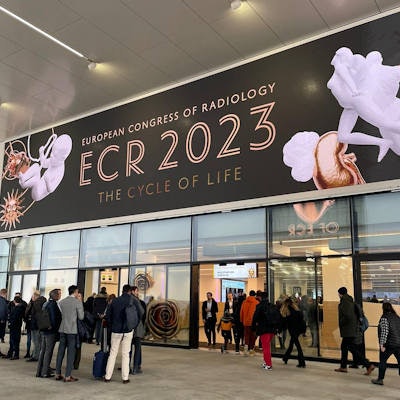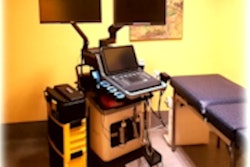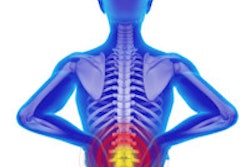
VIENNA - Radiographers' ability to accurately identify COVID-19 pneumonia can be increased by almost 15% through reviewing computer-based training sets of CT images, Irish researchers have reported at ECR 2023.
The results suggest that such a relatively simple intervention could help readers identify new radiological findings if -- or more likely, when -- the next pandemic hits, said presenter Andrew England, PhD, from the University of Cork in Ireland in a 1 March talk. England is president of the European Federation of Radiographer Societies (EFRS).
"[COVID-19 had a] radiological appearance different than other cases of pneumonia," he noted. "With this study, we wanted to consider the issue of rapid training, so that if we get presented with a pandemic again, we can quickly [identify new radiological findings]."
Since its onset, COVID-19 has been the cause of almost six million deaths around the world, England said. From the beginning of the pandemic, chest x-ray and CT were used to define disease severity and select patients for hospital admission and for intubation. But it quickly became clear that pneumonia caused by COVID-19 could be tricky to identify, as it often shared features with other types of disease. In fact, previous research has reported a COVID-19 detection accuracy range between 67% and 97%.
England and colleagues sought to assess the efficacy of a training protocol on radiographers' ability to identify the disease through a small study that included nine radiographers who read a baseline set of images, three training sets, and a final test set via a radiology online training tool from Sydney, Australia-based DetectedX. After each type of reading, the study participants were given feedback via a report that flagged any errors and directed participants to characteristics of COVID-19 in the image. The investigators tracked sensitivity, specificity, receiver operating characteristic (ROC), true positive and negative values, and false positives and negatives.
The team found the following statistically significant results between readers' baseline tests and the final test set:
- A 14.3% improvement in sensitivity
- A 6% increase in ROC
- A 1.8% decrease in false negatives
"This study indicated that improvements can be made in radiographers' detection accuracy for COVID-19 after training sets of CT images, as this aids radiographers in learning the radiological appearances of COVID-19 on CT," the investigators wrote in their research abstract.
England conceded that the study was small, but he stressed that nevertheless, its findings show promise. He and his colleagues urged a "wider multinational [evaluation]" of radiographer performance for identifying COVID-19.
"[This type of intervention] has great potential, but more research is needed," he concluded.











